
KANDY
Ancient | Historical | Cultural
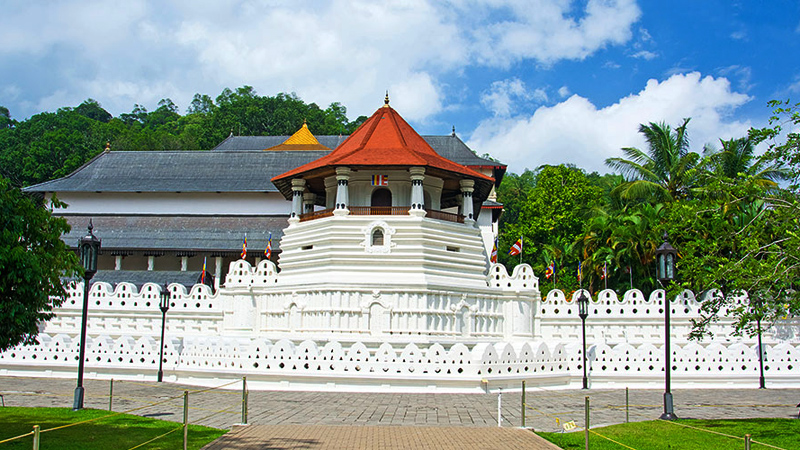
KANDY 114 KM (71 Miles) From Colombo
Kandy is one of the most scenic cities in Sri Lanka and lies in the midst of hills. It is the Capital of the Central Province. It is both an administrative ad religious city. Kandy is the second largest city in the country and is frequently visited by Buddhists especially of the Theravada School.
Kandy is very famous among tourist for three main reasons: It is home to the sacred tooth relic of the Buddha (Temple of the Sacred Tooth Relic ; Dalada Maligawa ), The Botanical Gardens ( Located in Peradeniya) and it always has a special place when it comes to festivities such as the Esala Perahara.
Tooth Relic
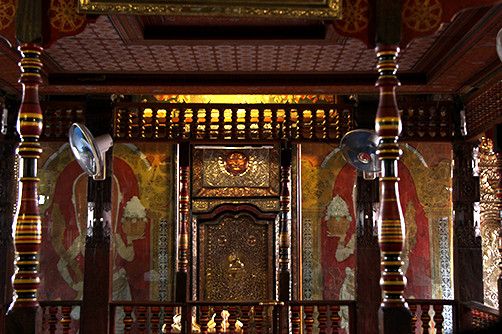
The Temple of the Tooth relic is the place that houses the Relic of the tooth of the Buddha. Originally part of the Royal Palace complex of the Kandyan Kingdom, it is one of the holiest places of worship and pilgrimage for Buddhist around the world. The Palace of the Tooth relic, the palace complex and the holy city of Kandy are associated with the history of the dissemination of Buddhism. The temple is the product of the last peregrination of the relic of the tooth of Buddha and the testimony of a religion which continues to be practiced today.
Parks and Gardens
.jpg)
The Royal Botanical Garden is the largest botanical garden in the whole island providing residence to over a large variety of plants, some even hundreds of years old.
Festivals (annual pageant)
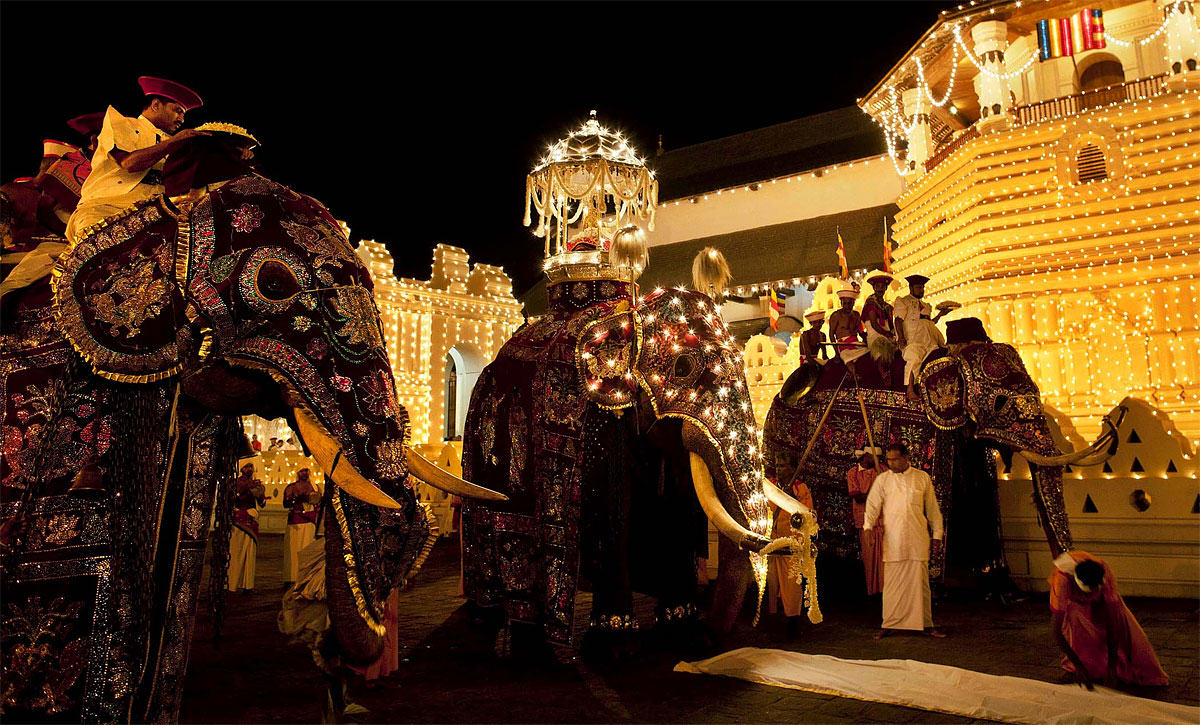
Kandy as stated earlier is also very popular due to the annual pageant known as the Esala Perahera, in which one of the inner caskets used for covering the tooth relic of Buddha is taken in a grand procession through the streets of the city. This casket is taken on a royal tusker. The procession includes traditional dancers and drummers, flag bearers of the provinces of the old Kandyan kingdom, the Nilames wearing their traditional dresses, torch bearers and also the grandly attired elephant. This ceremony which is annually held in the months of July or August attracts large crowds from all parts of the country and also many foreign tourists.
Kandy is must for anyone's itinerary when visiting Sri Lanka. It is considered one of the most beautiful places in Sri Lanka which at the same time show cases the Sri Lankan Culture at its highest level.
DAMBULLA
Religious | Historical | Ancient
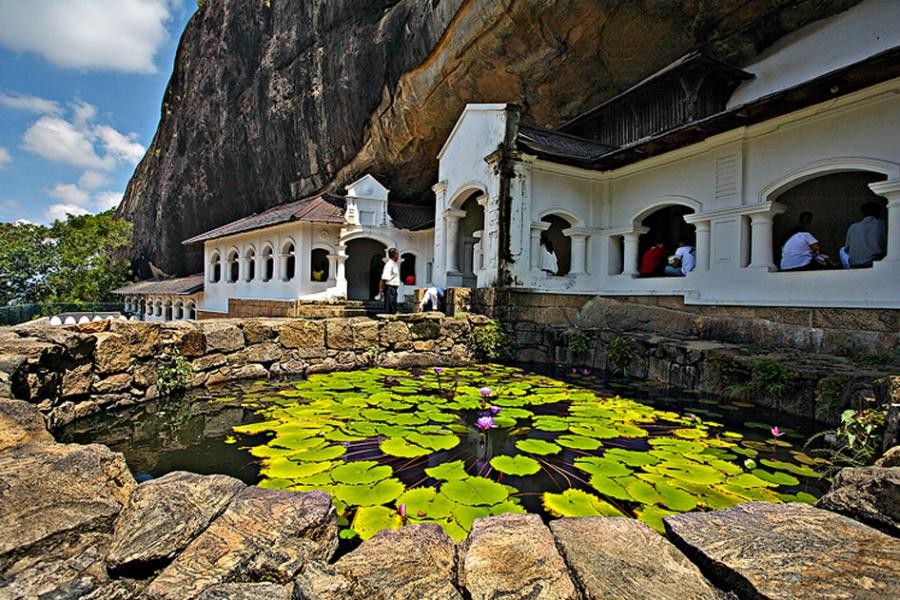
DAMBULLA 177 KM (110 Miles) From Colombo
Sri Lanka is rich and overflowing when it comes to colourful history, many came and went, the essence of the dominance still lingers about in the cities and buildings. From Portuguese to Dutch, Sri Lanka has suffered and bloomed through many events.
Damulla is a large town situated in the Matale district, pretty near to Colombo. It is also given the title of a World Heritage Site. The town's most fascinated fact seems to be the time period of it's construction, it was built in just 167 days. Bursting with beautiful sites like the ironwood forest, rose quartz mountain, Rangiri Stadium and Na Uyana Aranya, one can't exactly pinpoint what this town is most known for.
Dambulla Cave Temple
.jpg)
It's glory is recognised and that is why it holds the title of a world heritage site, Dambulla Cave Temple lies in the central part of the country and is also known as the Golden Temple. People from faraway places come to see the cultural beauty with their own eyes.
Inside the caves around the golden temple there are paintings and statues strewn all over, all related to the life of Gautama Buddha, his life and the events that took place in it. Vishnu, Ganesha and Demon—Mara are historic gods and goddesses that also have some paintings and structures sculpted for them, situated in the caves.
It's predicted that the site has 2700 human skeletons buried underneath it.
History of Dambulla
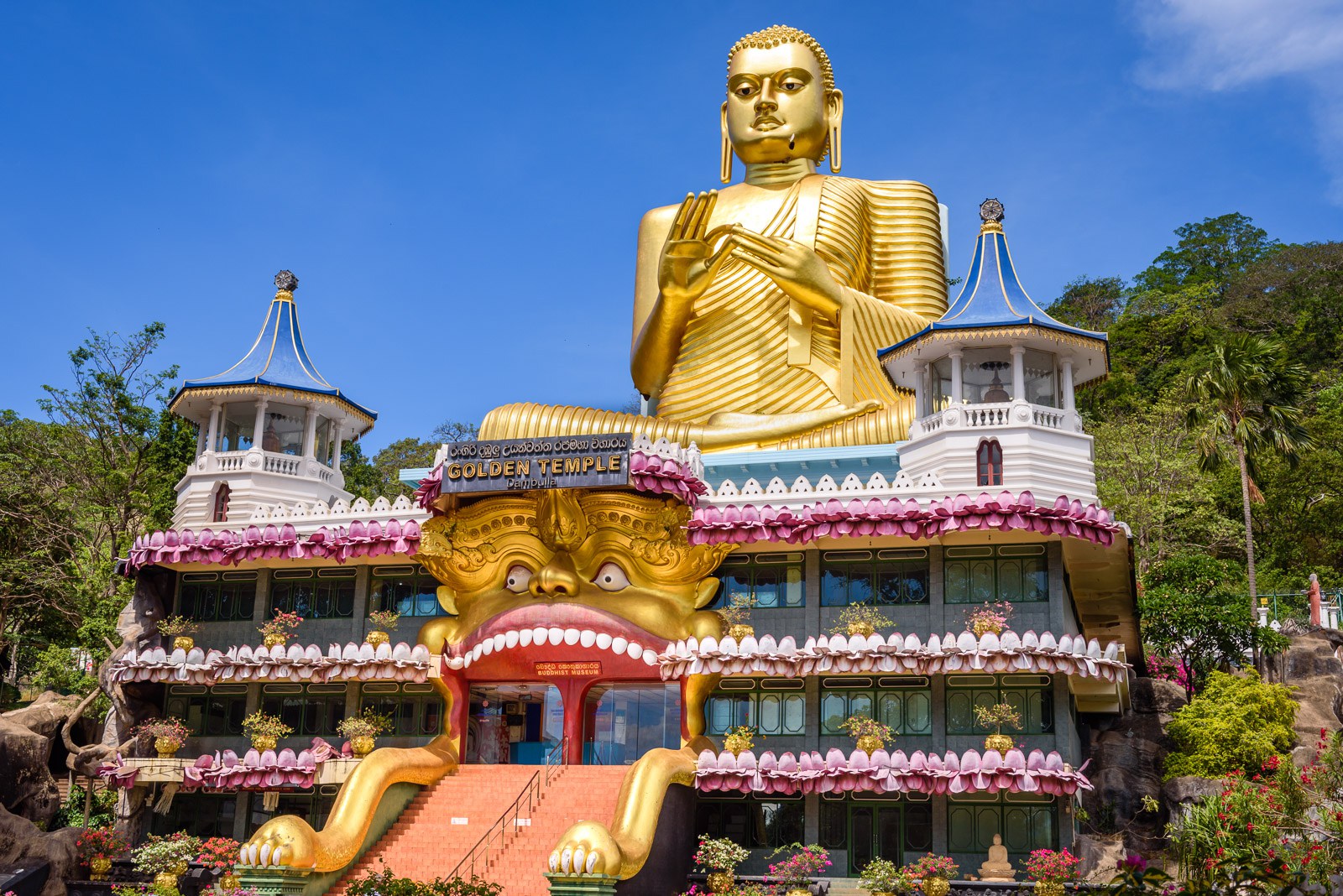
This historic temple dates way back to first century BCE. The structure can be explained as a overhanging rock looming over five enormous caves.
When it was made, it was considered as one of the largest and most essential monasteries. The hands of many Kings and rulers have interfered with the temple, but it still stands and screams the history embedded deep inside every crack of it's walls.
GALLE
Ancient | Historical | Beach
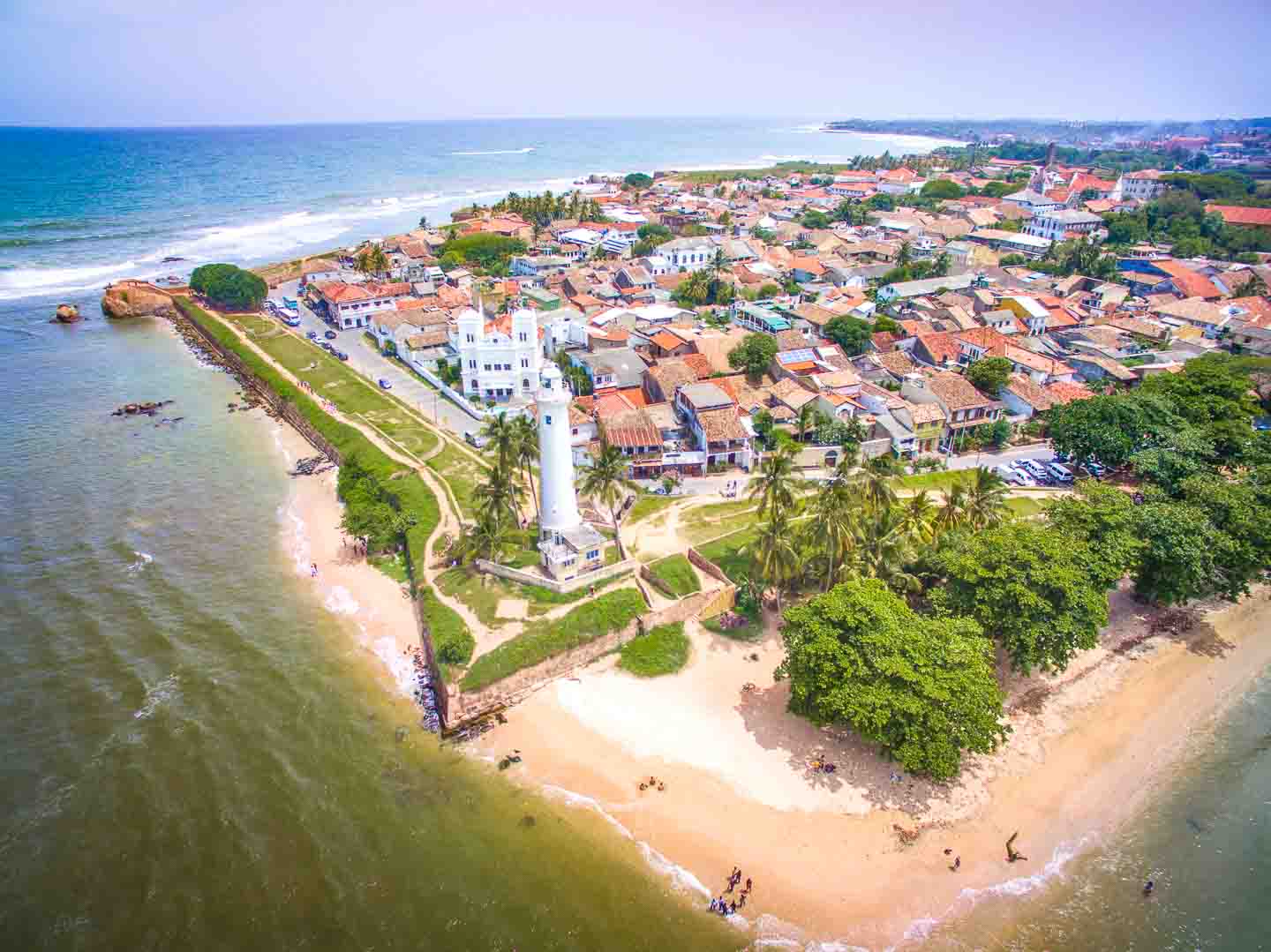
GALLE 128 KM (79 Miles) From Colombo
Galle is situated in the southwestern tip of Sri Lanka; it is one of the country's integral cities. Galle has a colorful history and beauty that renders many speechless.
The city is filled with Dutch-colonial buildings people come from faraway places to see. The air is filled with the sweet smell of spices and the salty winds give it a authentic recognition. Galle is filled with art that's rare, the streets are filled with people who are ambitious and hardworking, showcasing their efforts in one the best displays that please the eye immensely.
The classic architecture fuses with the tropical setting that's the envy of many man-made resorts and architects.
Galle is said to be a heavenly piece of art, tropical heaven and rich in history.
Galle Fort
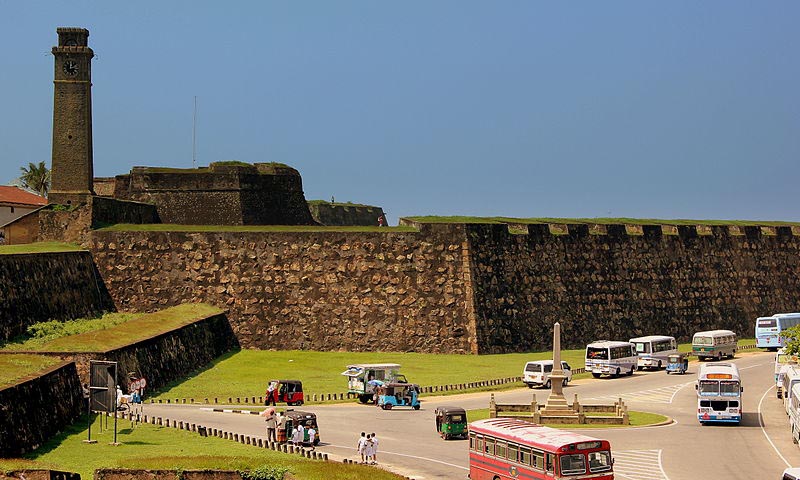
The fort built by the Portuguese in 1588 holds most of the attention as you can explore the city of Galle through it's walls. The Fort has a multi-religious ethnic population and embedded deep inside it's walls is a rich history people are besotted with. This glorious building suffered through the Boxing Day Tsunami and was later restored to it's magnificent beauty. It has been given the title of Unesco World Heritage Site because of it's endless glory. It's a beautiful travelling location which gives you a experience that's hard to forget.
History
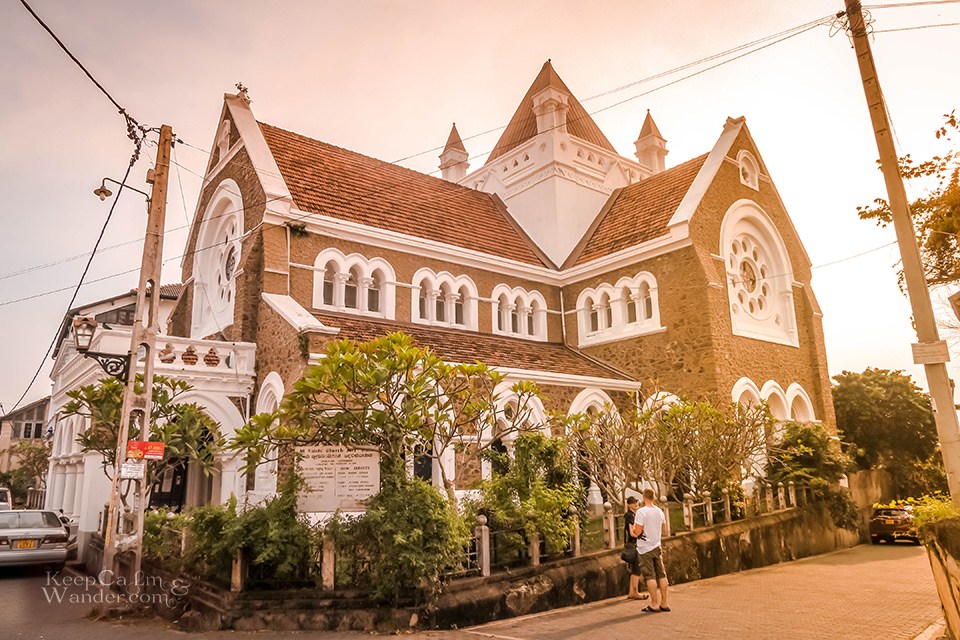
Galle's history is a wonder in it's own. Under the dominance of Portuguese and Dutch for a long period of time, it suffered through a thousand changes. It was referred to as Gimhathiththa in the 16th century before the Portuguese took over. But Galle showed it's true potential in the Dutch-colonial period, the buildings they constructed are sight seeings wonders people wish to see to this day.
It suffered through a massive tsunami but the city has been restored to it's original beauty and stands to be one of the best tropical areas on the planet, a tourist's heaven
ANURADHAPURA
Ancient | Religious | Historical
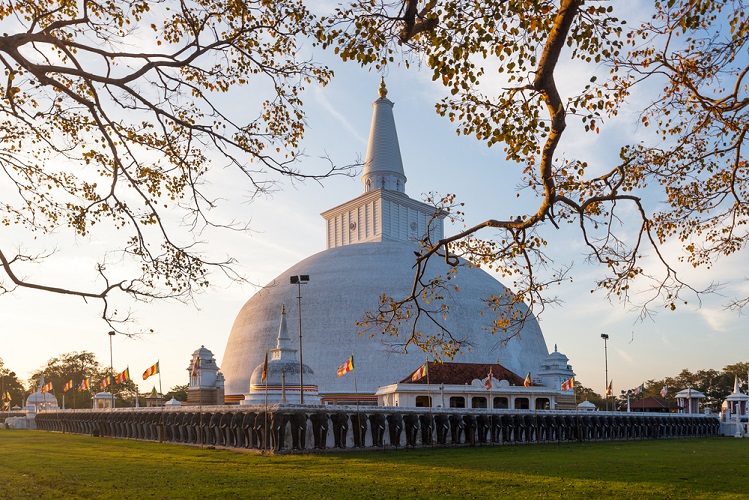
ANURADHAPURA 213 Km (132 Miles) From Colombo
Anuradhapura is one of the ancient cities in Sri Lanka, well known for its ruins depicting early Sri Lankan civilization. It is very famous among Buddhists pilgrims. Anuradhapura was earlier the capital of the Island (in ancient times) and most of the Kings who ruled Sri Lanka resided in this vast city. The city is now named as a world heritage site by UNESCO.
History Anuradhapura
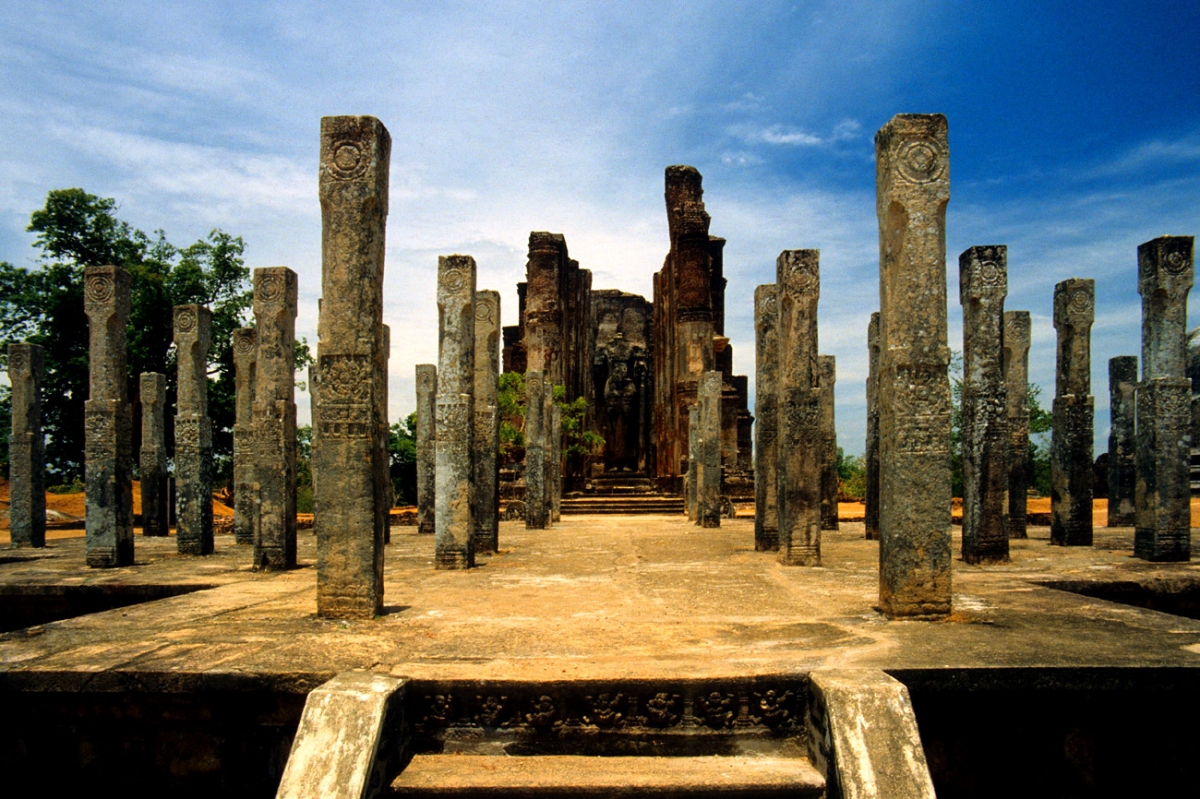
On the contrary to the historical data that indicates that the city is founded in the 5 century BC archeological data puts that date back to far as the 10 century BC. However it was King Pandukabhaya who planned the layout of the city and made it his capital in the 4th century BC. He constructed many reservoirs and shrines. The city reached its highest magnificence by the beginning of the Christian era. The city boasted some of the most complex irrigation systems in the ancient world.
The ruins in Anuradhapura
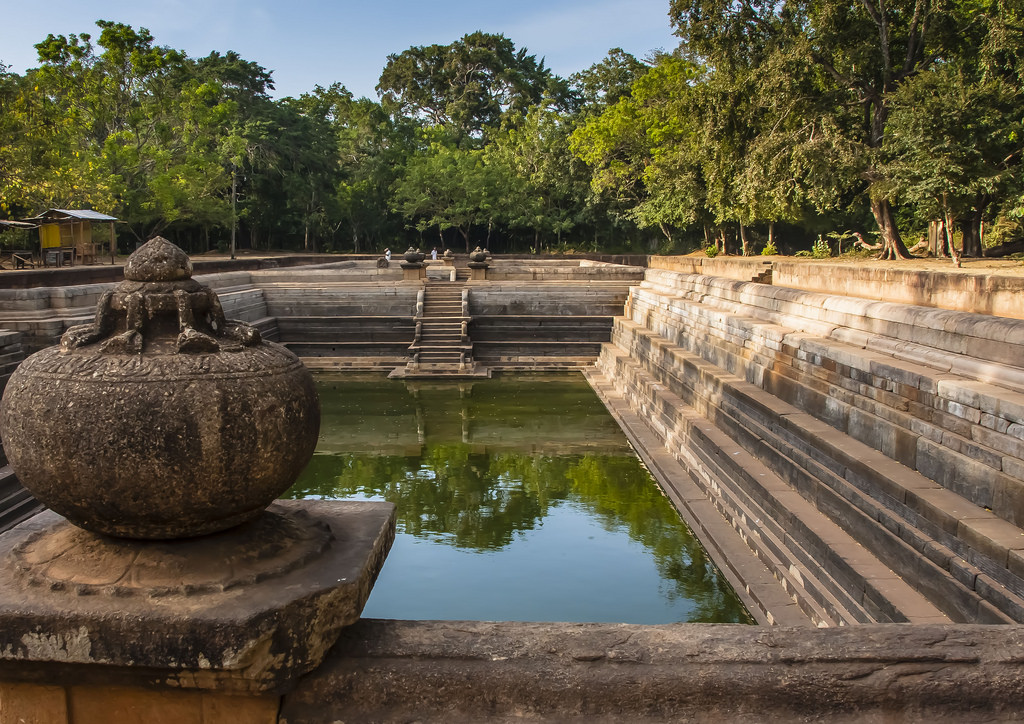
Ruins are the only remains of what Anuradhapura used to be. Ruins generally have three classes of buildings:
Major Tourist Attractions at Anuradhapura
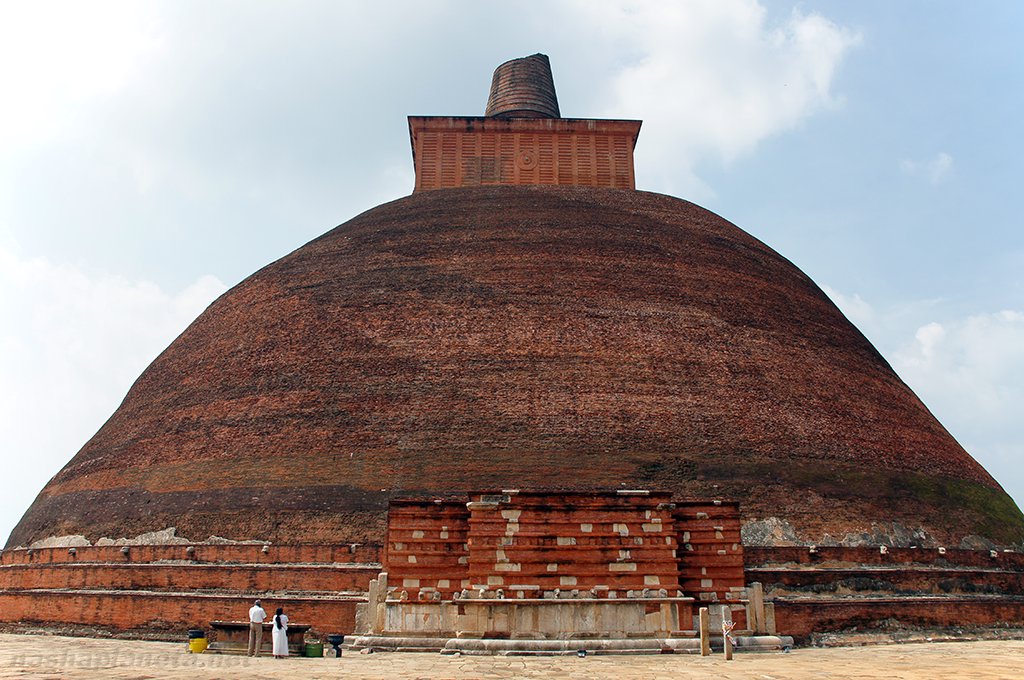
The Eight Great Places For Veneration.
Other Famous Structures in Anuradhapura Sri Lanka
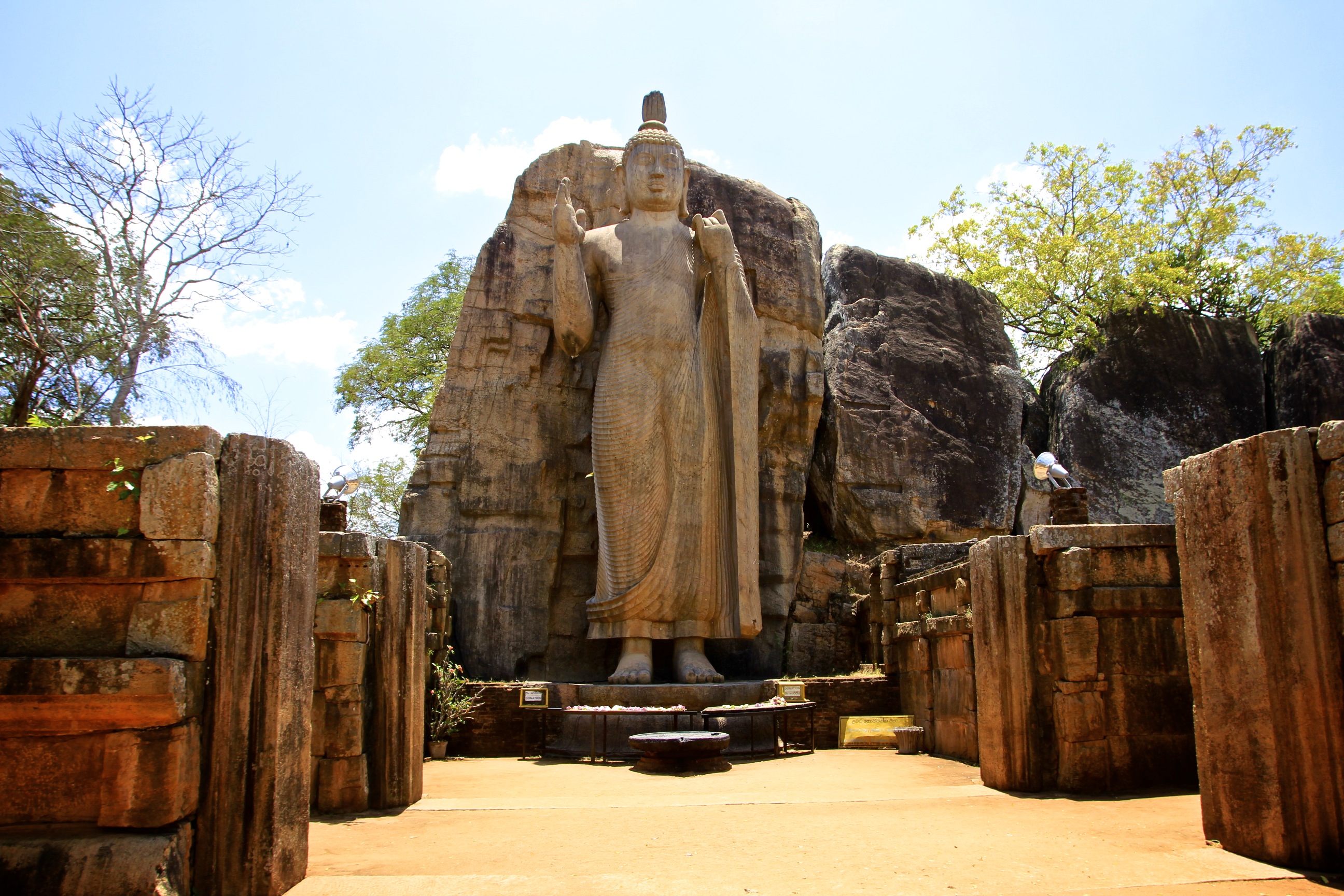
POLONNARUWA
Ancient | Religious | Historical

POLONNARUWA 224 KM (139 Miles) From Colombo
Polonnaruwa is the Island's 2nd largest kingdom. Today the ancient city of Polonnaruwa remains one of the best planned Archeological relic sites in the country, standing testimony to the discipline and greatness of the Kingdom's first rulers. Its beauty and serenity was captured in the Duran Duran music video Save a Prayer in 1982. The ancient city of Polonnaruwa has been declared a World Heritage site by UNESCO. The Lankathilaka temple and a colossal statue of the Buddha made from stone is located here.
Ancient city of Polonnaruwa
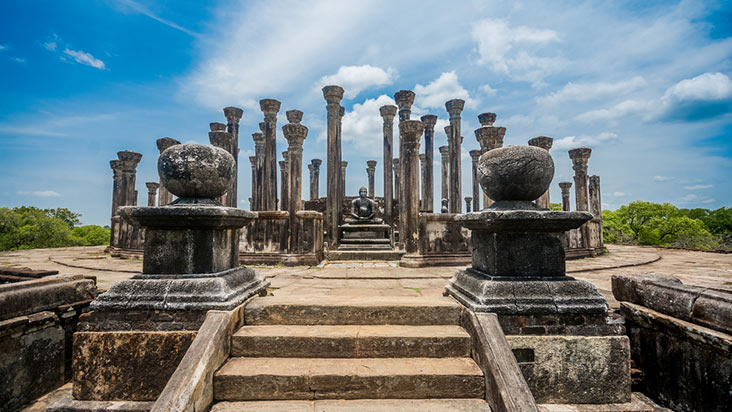
Polonnaruwa is the 2nd largest city in north central province. But it is known as one of the cleaner and more beautiful cities in the country. The greeny environment houses amazing ancient constructions, Parakrama Samudraya (a huge lake built in 1200 A.C) and above all nice hospitable people. Scientific observation has been made about its climate changes it has been noted that the temperature of the later part in the year drops significantly low. Nevertheless leaving the country without even stepping on to the fertile land would be a huge waste, make sure that Polonnaruwa is a part in the itinerary.
Religious Significance of Polonnaruwa
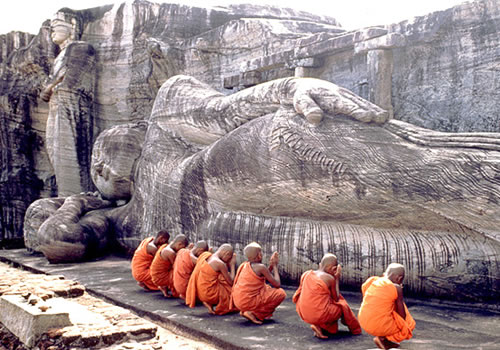
Buddhist pilgrimages are organised among people to visit ancient ruins of temples, stupas and even hindu temples. Rankot Vihara, the largest stupa in the city is about 180 ft high. Lankathilaka Gedige, buil during the rule of Parakramabahu, however the roof of it is missing but still is worth a visit to view the temple's magnificence. Kiri Vihara another stupa redicovered during the 19th century, it was surrounded by the dense forest and thereby wasn't known to man for long periods of time. Shiva Dewale, a hindu temple that was built during the 13th century, is also one of the famous attractions in Polonnaruwa.
SIGIRIYA
Ancient | Historical | Nature
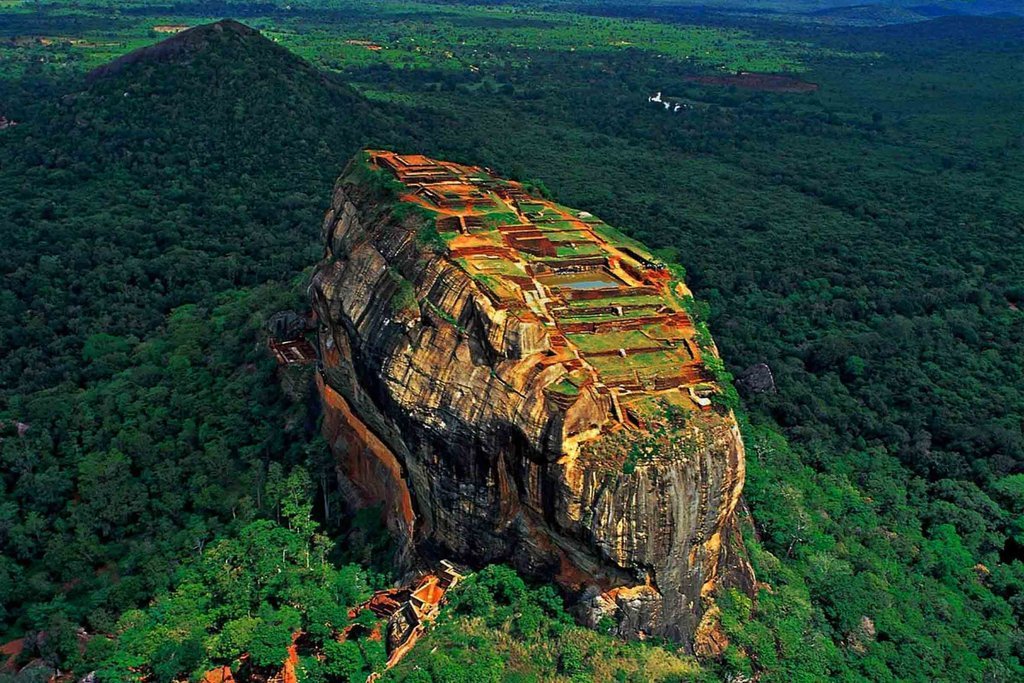
SIGIRIYA 169 KM (105 Miles) From Colombo
Sigiriya also known as the Lion's Rock is a rock fortress and a palace located in the Matale district of Sri Lanka. This ruin is surrounded by gardens, ponds and other structures. Sigiriya was built by King Kassapa and it is included as a World Heritage site. Sigiriya is the best preserved city centre in Asia.
History
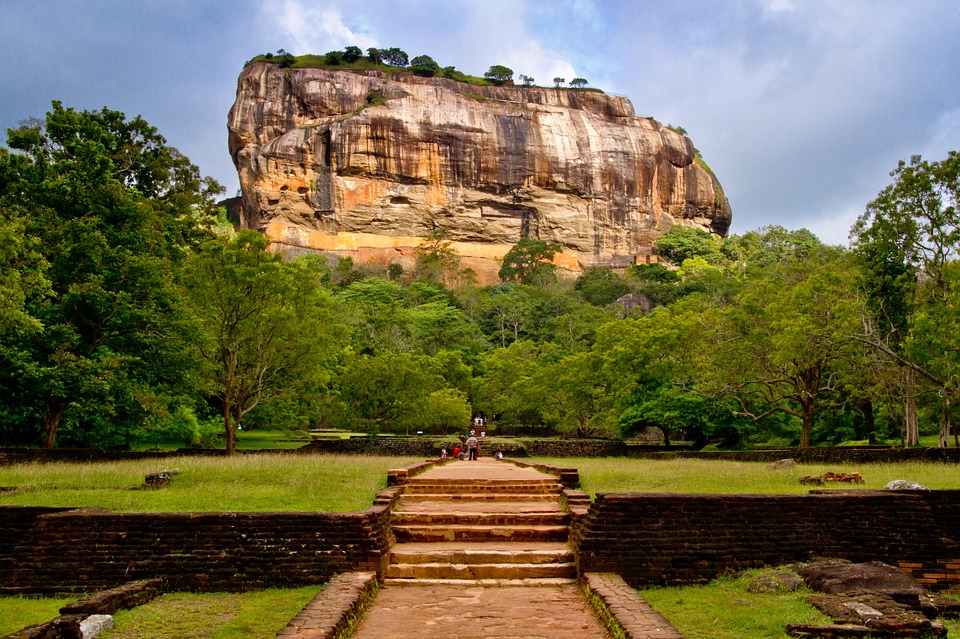
Earlier is was a rock-shelter mountain monastery which was donated by Buddhist devotees. Later King Kassapa renovated it by building gardens and palace. After his death it was again used as a monastery.
Human habilitation in Sigiriya at its earliest was found to be nearly five thousand years during the Mesothilic period.
Rock inscriptions are carved near the drip ledges on many of the shelters, recording the donation of the shelters to the Buddhist monastic order as residences. These have been made within the period between the third century B.C and the first century A.D.
In 1831 Major Jonathan Forbes of the 78th Highlanders of the British army while returning on horseback from a trip to Polonnaruwa came across the "bush covered summit of Sigiriya". Sigiriya came to the attention of antiquarians and later archaeologists.
The Sigiriya complex itself consists of the central rock and two rectangular precincts which are surrounded by two moats and three ramparts. The city is based on a square module.
Structure of The Lion Rock
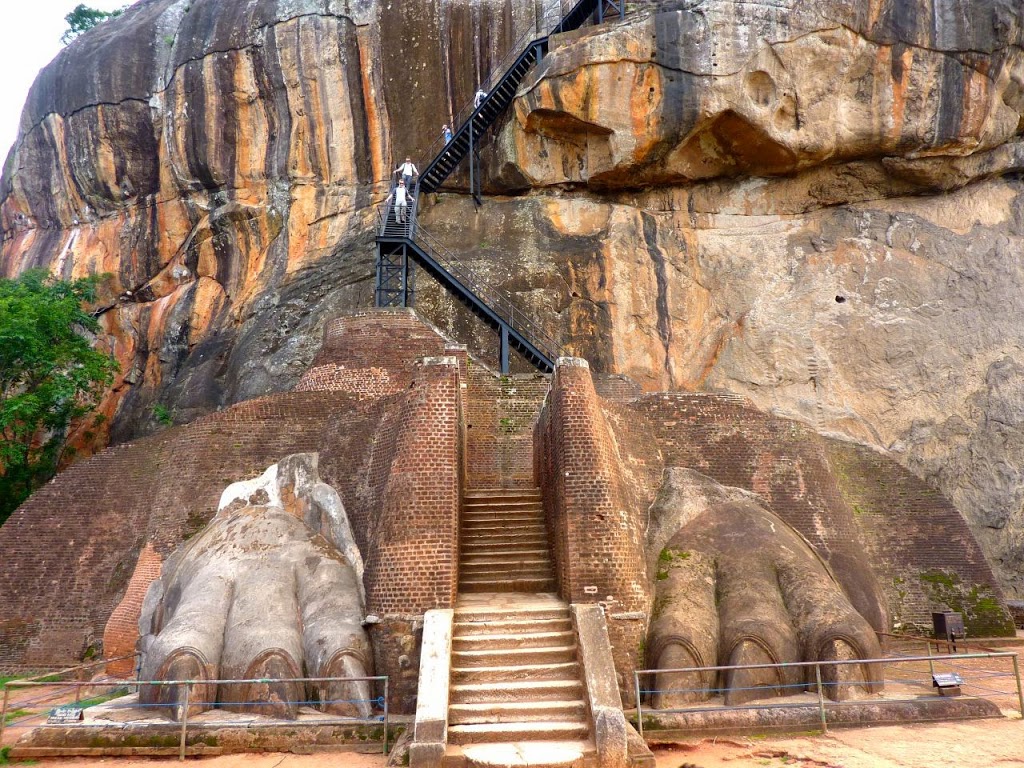
The Sigiriya Rock is actually a hardened magma plug from an extinct volcano. The most significant feature of the rock would be the Lion staircase leading to the palace garden. The Lion could be visualized as a huge figure towering against the granite cliff. The opened mouth of the Lion leads to the staircase built of bricks and timber. However the only remains of this majestic structure are the two paws and the masonry walls surrounding it. Nevertheless the cuts and groves in the rock face give an impression of a lion figure.
Frescos
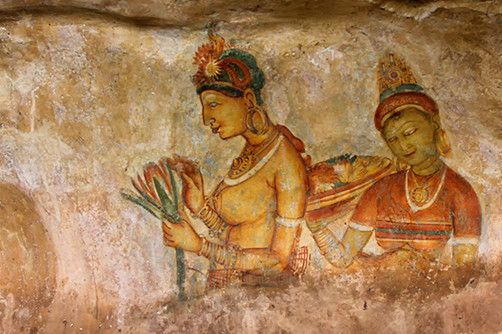
There are only two pockets of paintings covering most of the western face of the rock. The ladies depicted in the paintings have been identified as Apsaras. However a lot of these ladies have been wiped out when the palace was again converted into a monastery so as to not to disturb meditation.
The Gardens
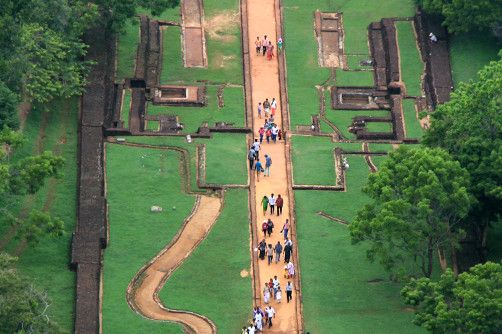
The gardens are amongst the oldest landscaped gardens in the world. The gardens are divided into three distinct but linked forms; water gardens, Cave and boulder gardens, and terraced gardens.
The Mirror Wall
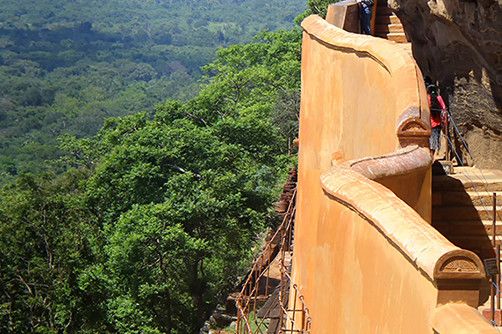
Originally this wall was so well polished that the king could see himself whilst he walked alongside it. Made of a kind of porcelain, the wall is now partially covered with verses scribbled by visitors to the rock. Well preserved, the mirror wall has verses dating from the 8th century. People of all types wrote on the wall, on varying subjects such as love, irony, and experiences of all sorts. Further writing on the mirror wall has now been banned.
ADAM'S PEAK
Religious | History | Hiking

ADAM'S PEAK(Sri Pada) 147 KM (91 Miles) From Colombo
There are a lot of places to be visited in Sri Lanka but you would not have seen the land of the Lord Buddha before in your life. Sri Pada(Adam's Peak) is first mentioned (as `Samanthakuta') in the Deepawamsa, the earliest Pali chronicle, (4th century), and also in the 5th century chronicle Mahawamsa, where it is stated that the Buddha visited the Sri Pada mountain peak.
Adam’s Peak is the fourth highest mountain with the height of 2244m and is located 40km northeast of Ratnapura district of Sri Lanka. This mount is also named as the sacred mountain as the footprints of the Lord Buddha and still there are millions of people came here every year to pay tribute to the lord Buddha arrival.
For centuries this place has been used by pilgrims from all over the world to pay religious ceremonies associated with their religions but unfortunately, this religious ceremonies changed with the time and people started many new religions out of it. The Buddha’s visit to Sri Lanka and the sacred footprint but due to various changes with the changing time this mount becomes something new for some new people.
A mount with different names
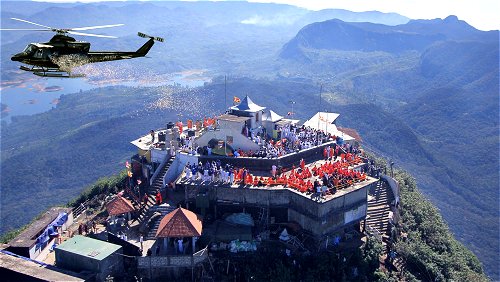
Mount Sri Pada(Adam's Peak) is not a hidden secret. Every religion follows the first human relation with God concept and that is the reason we find this mount with different names as people of different nations have different languages and that is the reason people call it with different names but it is sacred for all. Sri Pada for Sri Lankans and some people called it the mountain of butterflies as there are a huge amount of them on the top (Sinhala) hill of the butterflies.
Hiking on Sri Pada (Adam's Peak)
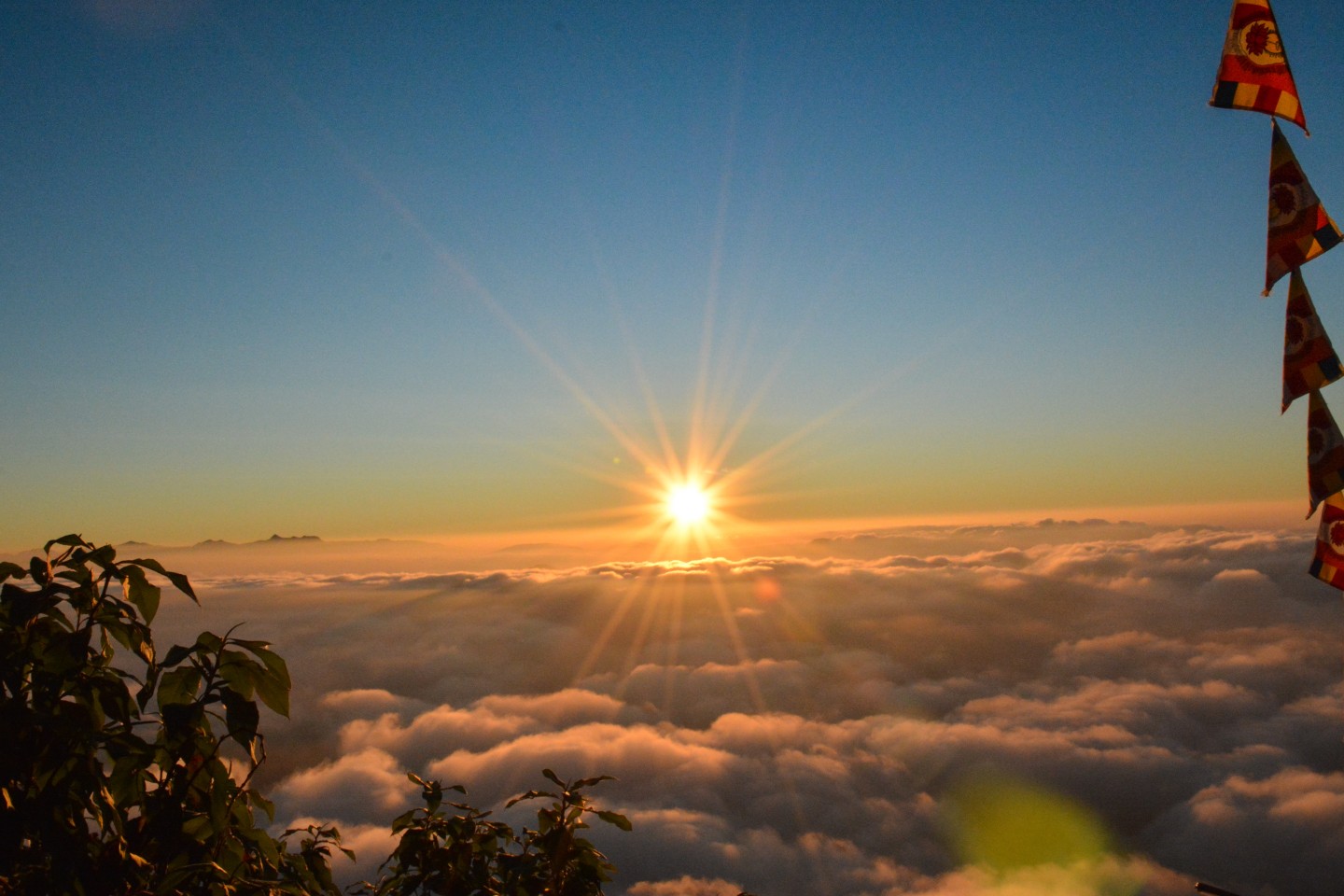
Apart from the religious attraction for Mount Sri Pada(Adam's Peak), a number of tourists visit it for its geographical position it took almost 5 hours to reach the top. A rich biodiversity exists near this mountain where a number of forests and hills awaits you. There is no railway or Air service to the mountain but the highway of Hatton city where you might find a railway line to to reach your destination.
YAPAHUWA
Ancient | Religious | Historical
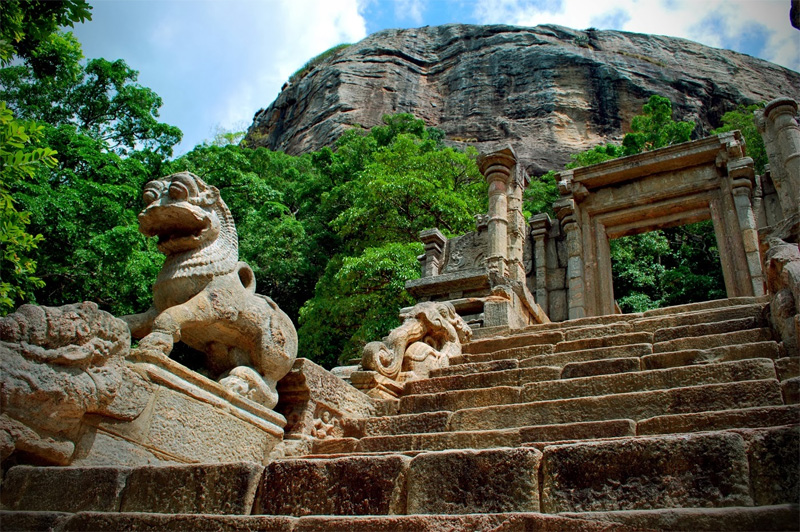
YAPAHUWA 147KM (91Miles) From Colombo
Yapahuwa is located a little way off the Kurunegala-Anuradhapura road, in the Wayamba province of Sri Lanka. Of all the ancient ruins in the country the Rock Fortress Complex of Yapahuwa is considered to be quite remarkable despite the fact that it isn't famous among most visitors. However, it is renowned as one of the best archeological site in the country. It is even rumored to be more significant than The Rock Fortres
History Of Yapahuwa
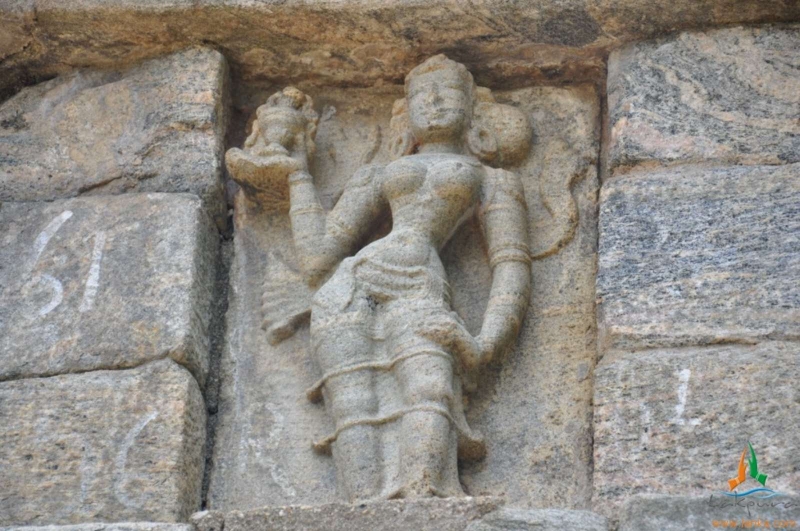
In the early 13th century Yapahuwa was the capital of the country and it housed the Sacred Tooth Relic of the Buddha for 11 Years. King Bhuvanekabhu I, the son of the King Parakramabahu who at that time ruled Dambadeniya, was stationed at Yapahuwa in order to protect the Country from Invaders; built the palace and the temple. After the Fortress was abandoned monks converted it into a monastery and monks still reside among the ancient ruins. Even today signs of early defense mechanisms can still be seen among the ruins.s in Sigiriya.
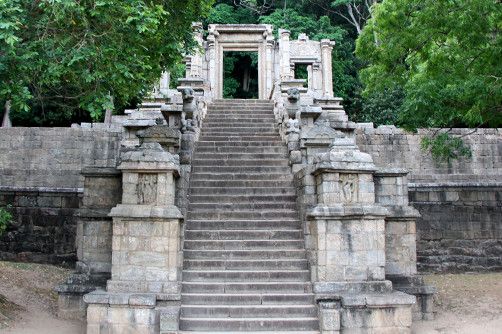
On top of the rock the remains of a stupa, a Bodhi tree, and a rock shelter/cave used by Buddhist monks is visible. A couple of caves are seen at the base of the rock, one of which is a Buddhist Shrine whereas another cave has some inscriptions on it. The rock fortress has a strong resemblance to the Sigiriya Rock Fortress.
COLOMBO
Capital | Shopping | Beach
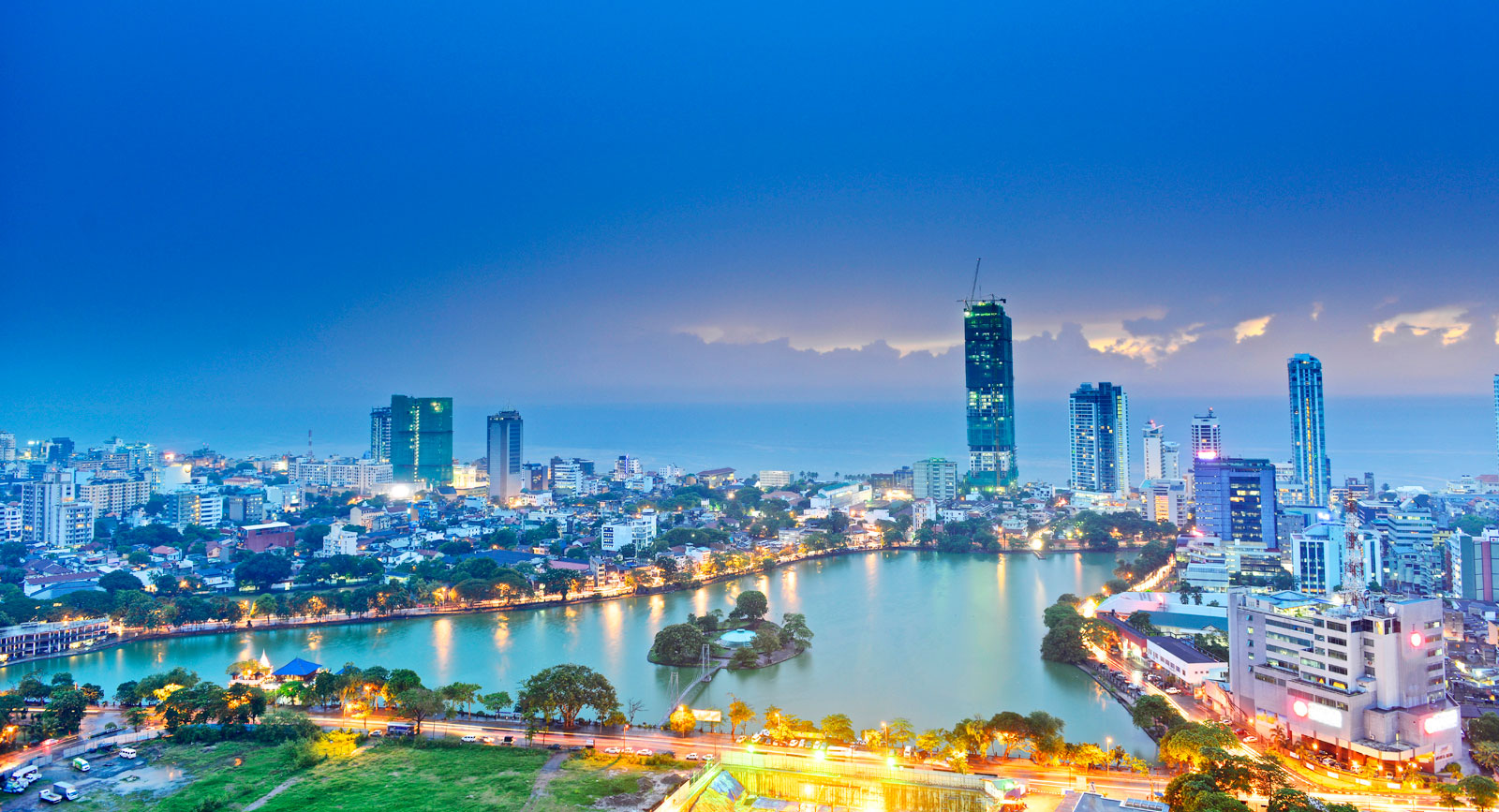
Colombo 0 KM (0 Miles) From Colombo
The largest city and commercial capital of Sri Lanka is Colombo which is located in the western province adjacent to Sri Jayewardenepura Kotte (the capital city of Sri Lanka ) Colombo is a vibrant city with a mixture of modern life , colonial buildings and ruins.
Due to its very large harbor and its position along the East-West sea trade routes Colombo was very popular among ancient traders 2000 years ago.
Colombo houses a majority of the Sri Lanka's corporate offices, restaurants and entertainment venues. Famous land marks in Colombo include the National Museum, World Trade Center , Vihara Maha Devi Park and the Galle Face Green.
The name "Colombo", first introduced by the Portuguese in 1505, is believed to be derived from the classical Sinhalese name Kolon thota, meaning "port on the river Kelani". It has also been suggested that the name may be derived from the Sinhalese name Kola-amba-thota which means "Harbor with leafy mango trees". However, it is also possible that the Portuguese named the city after Christopher Columbus.
Natural Harbor
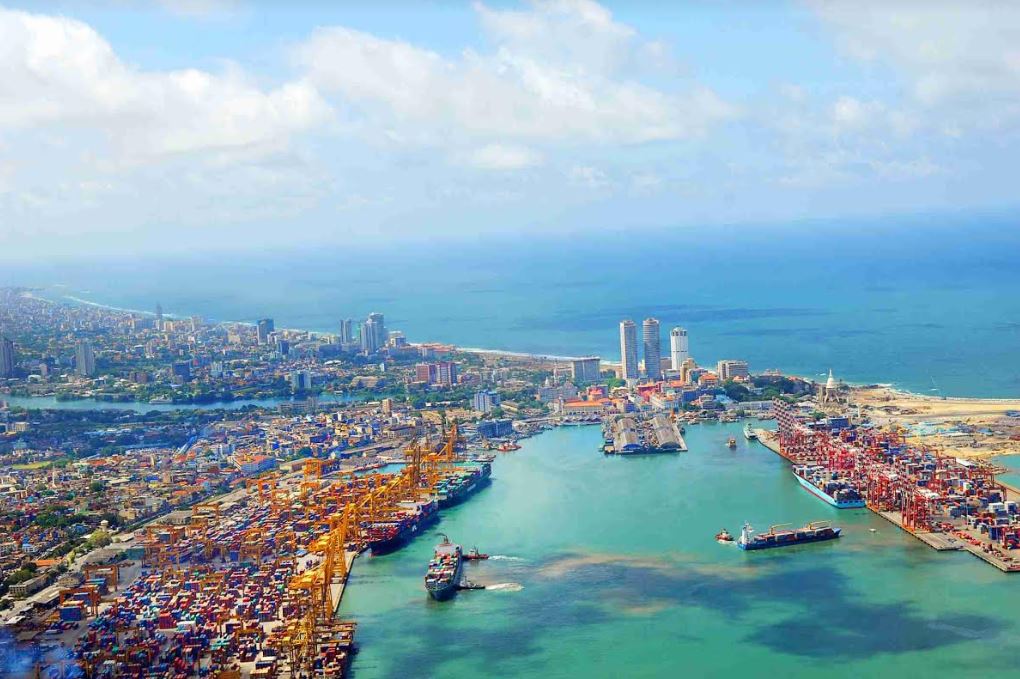
Due to the fact that Colombo had a natural harbor of its own the Romans, Arabs and Chinese traders were well aware of its significance. Colombo's geography is a mix of land and water. The city has many canals and, in the heart of the city is located a lake known as the Beira Lake. The lake has a historical significance for which it was used to defend the city by colonists.
Geography and Climate
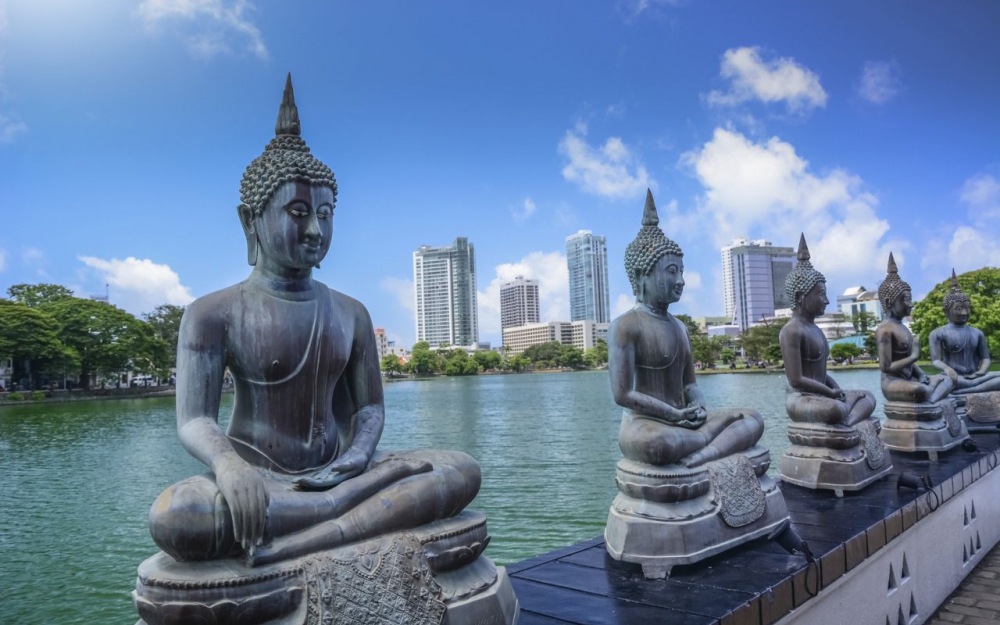
Colombo's climate is fairly temperate all throughout the year averaging around 31 degrees. Colombo is a multi-ethnic, multi-cultural city. The population of Colombo is a mix of numerous ethnic groups, mainly Sinhalese, Moors and Tamils. There are also small communities of people with Chinese, Portuguese, Dutch, Malay and Indian origins living in the city, as well as numerous European expatriates. Colombo is the most populous city in Sri Lanka.
The Official Vision and Mission in Colombo is as follows:
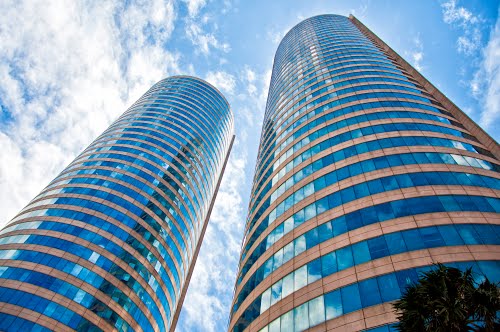
Vision:
"Colombo being a model city in Asia, a caring organization looking after interests of citizens and users with an efficient quality service for creation of safe, healthy and wealthy life".
Mission:
"Organization achieving excellence in providing citizen centered services to the public / customer, optimizing the use of available resources through a competent, motivated and dedicated team".
KATARAGAMA
Religious | Historical | Annual Pageant
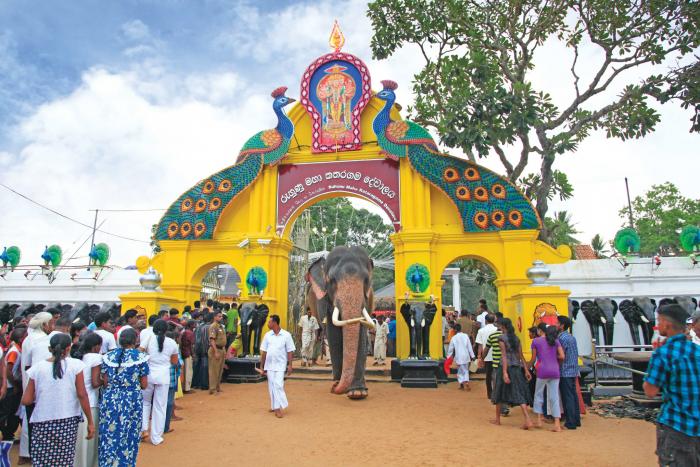
KATARAGAMA 222 KM (138 Miles) From Colombo
Kataragama is place of pilgrimage for a variety of religions such as Hinduism, Buddhism and Islam and is located in south-east corner of Sri Lanka. Therefore is a multi-religious sacred city.
History
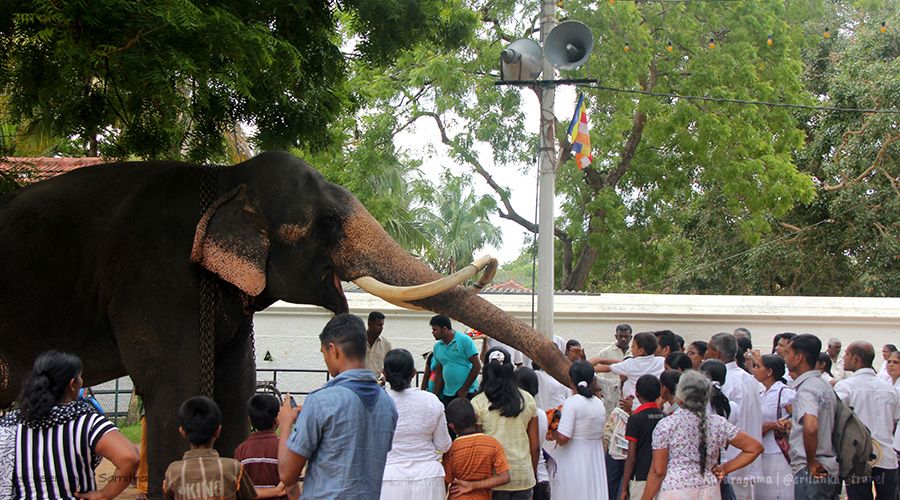
The deity at Kataragama is indigenous and long-celebrated in Sri Lankan lore and legend, and originally resides on the top of mountain called Wædahiti Kanda just outside of the Kataragama town. Since ancient times an inseparable connection between the God and his domain has existed. At one time the local deity was identified with God Saman, a deity that was important to the Sinhalese people before their conversion to Buddhism.
Kataragama Shrine
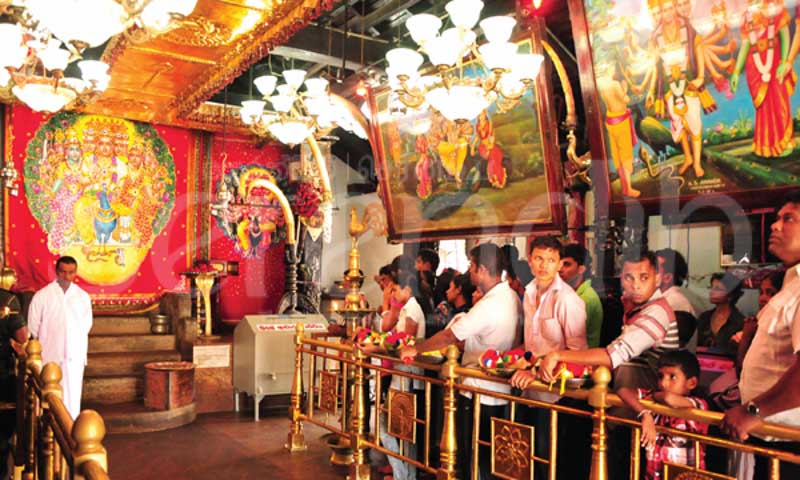
Kataragama is a holy shrine and a popular pilgrim center for Buddhists and Hindus. In fact Kataragama is one of the 16 principal places of Buddhist pilgrimage. Tamil Hindus of Sri Lanka and South India refer to the place as Katirkamam and it has a famous Hindu shrine dedicated to Lord Katirkaman.
Kiri Vehera
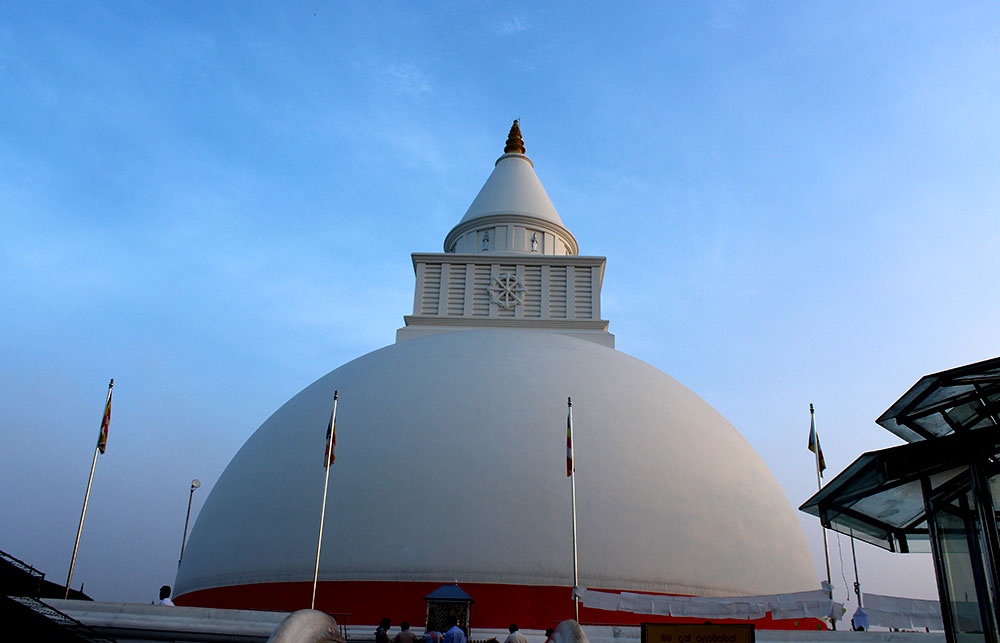
The Buddhist Kiri Vehera Dagoba is located close to the Hindu Temple and is built by King Mahasena. Sinhala Buddhists believe that Kataragama was sanctified by the Lord Buddha. The Dagoba is said to be built right where the King listened to the Buddha's discourse.
Manik Ganga (River of Gems)
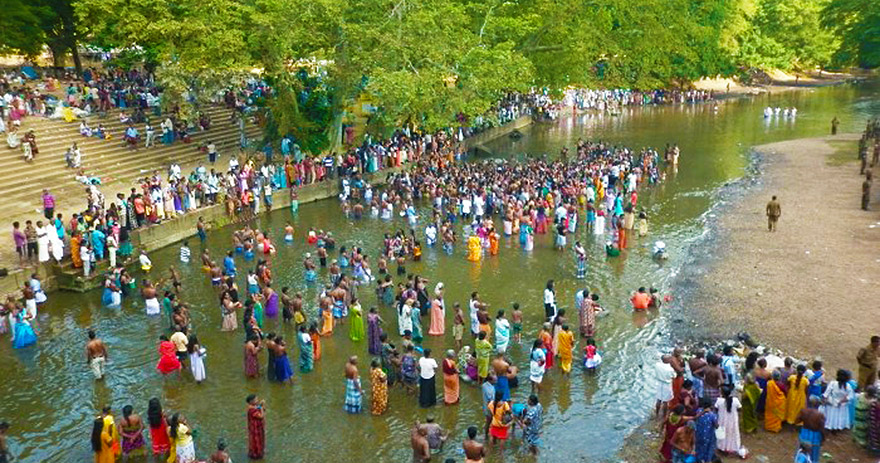
The local river namely Manik Ganga has a similar function as that of the River Ganges in India as place of absolution where a bath taken from this river purifies and individual. Local residents declare that one can be healed of ailments by bathing in it not only from its high gem content but also the medicinal properties of the roots of various trees that line the river through the jungle.
Festivals
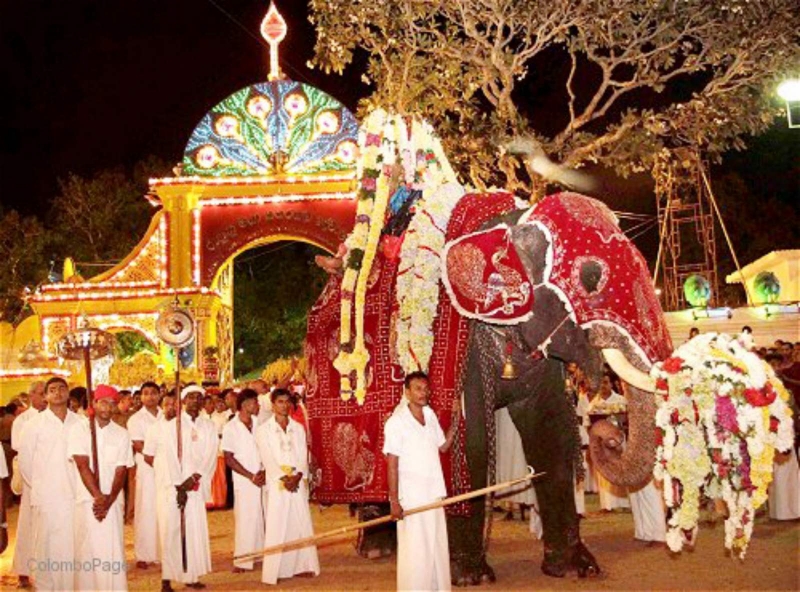
Kataragama is famous for fire walking rituals and the annual perahera (procession) in July/Augusta
JAFFNA
Religious | Beach | Ancient
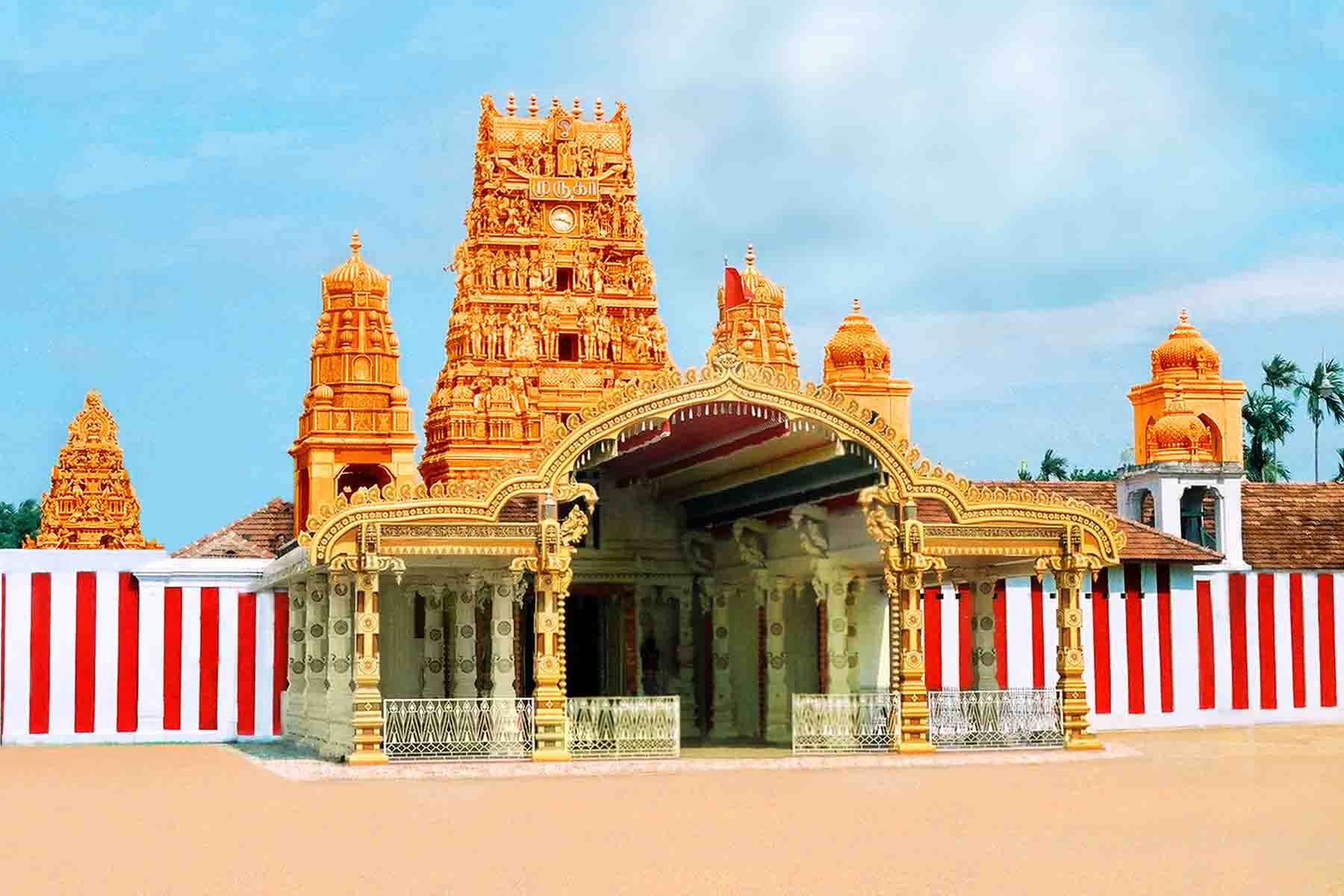
JAFFNA 411 KM (255 Miles) From Colombo
Also known as Yaalpanam among Tamils. Located on the northern-most part of Sri Lanka. One of the oldest places of inhabition in South-east Asia. Mostly populated by Tamils along with a handful of Sri Lankan Muslims. However it is one of the most populated cities of Sri Lanka. Sri Lankan Tamil is the main language spoken in Jaffna along with a little bit of sinhala , however english is widely understood and spoken.
Jaffna Fort
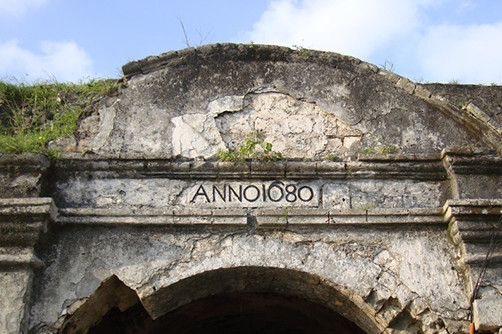
Built during the late 1600s by the Dutch. Close to the fort is a British-period house, in which Virginia Woolf's husband Leonard Woolf lived for sometime it was mentioned in his memoir 'Growing'.
Temples
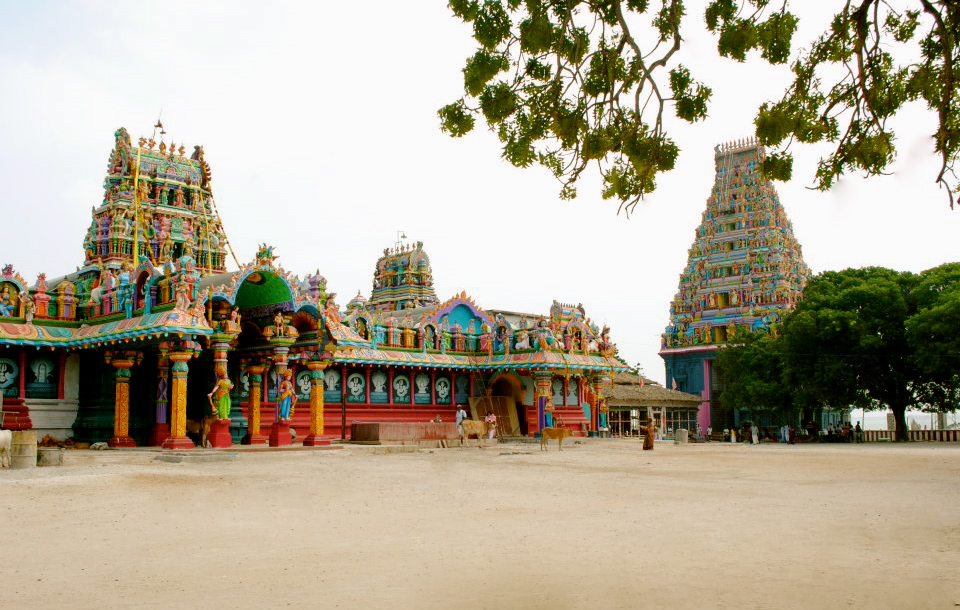
Hindu Kiovels or temples are one of the major attractions in Jaffna, the most famous kovil is the Nallur Kovil, which reflects the Dravidian architecture and style beautifully. The Kandaswamy Kovil is also mostly visited by tourists which is one of the oldest kovils in Sri Lanka. The kovil was built during the 10th century. However the original Kovil was demolished by the Portugese during the colonial era.
Festivals
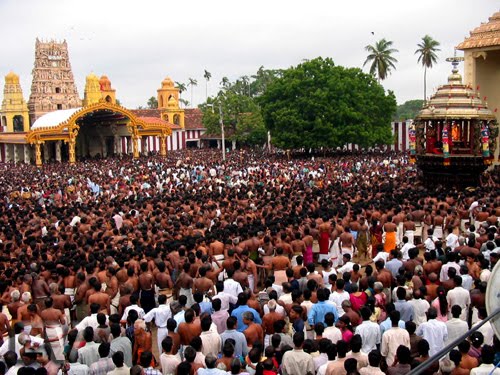
Jaffna is a very cultural place due to the fact that Tamils belong to the Darvidian culture. Colourful festivals are a huge part of the culture Deepawali, Navarathri and Shivarathri are the few among the many festivals.
NAGADEEPA
Religious | Beach | Ancient
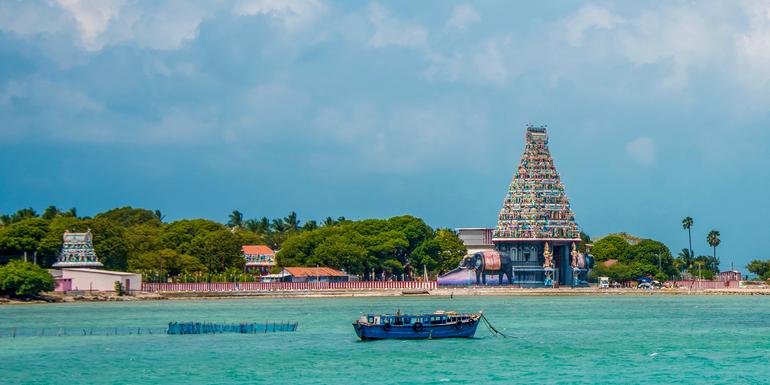
NAGADEEPA 441 KM (274 Miles) From Colombo
Nagadeepa or Nainativu is one of the smallest island in the Gulf of mannar. The only way to the island is via a boat. It is both a place of religious significance and beauty. It is one of the places in Sri Lanka that they Buddha was said to have visited by the Great Chronicle of Mahavamsa. The island is sandy and flat and is home to a lot of palm trees. The island is located abt 30 km away from Jaffna. There are two main jetties in order to enter the island , one leads to a hindu temple and the other to the Nagadeepa Vihara.
History
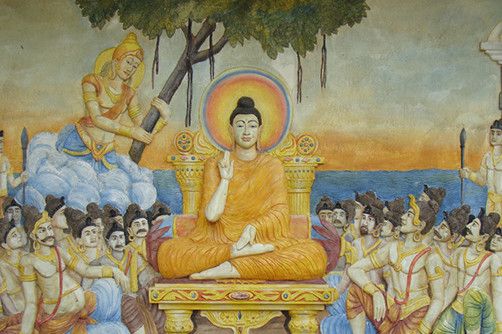
The island was earlier visited by mechants who wanted to buy conch shells. However the major historical event was the Buddha's visit to Nagadeepa to settle a dispute between the two kings of the Nagas Chulodara and Mahodara. Since the Buddha advocated non-violence and compassion somehow he was able to make the kings settle the dispute. The Kings later presented a throne to the Buddha who kindly refused and is now enshrined in the Nagadeepa Stupa and thus makes it one of main places of travel for Buddhist pilgrims.
Temples
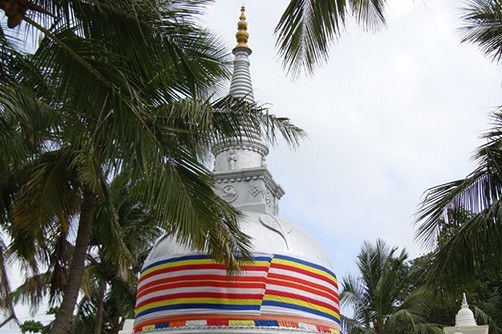
One of the most visited holy places for Buddhists. The Vihara houses two very ancient artefacts which are placed strategically at the entrance on either side. A large ancient anchor and a big stone with an inscription written by King Parakramabahu I. The stupa of the vihara enshrines a throne that was built by the two kings who wanted to express their gratitude to the Buddha who refused the token of appreciation. The Hindu Temple is also a major attractions with its distinctive red and white walls.